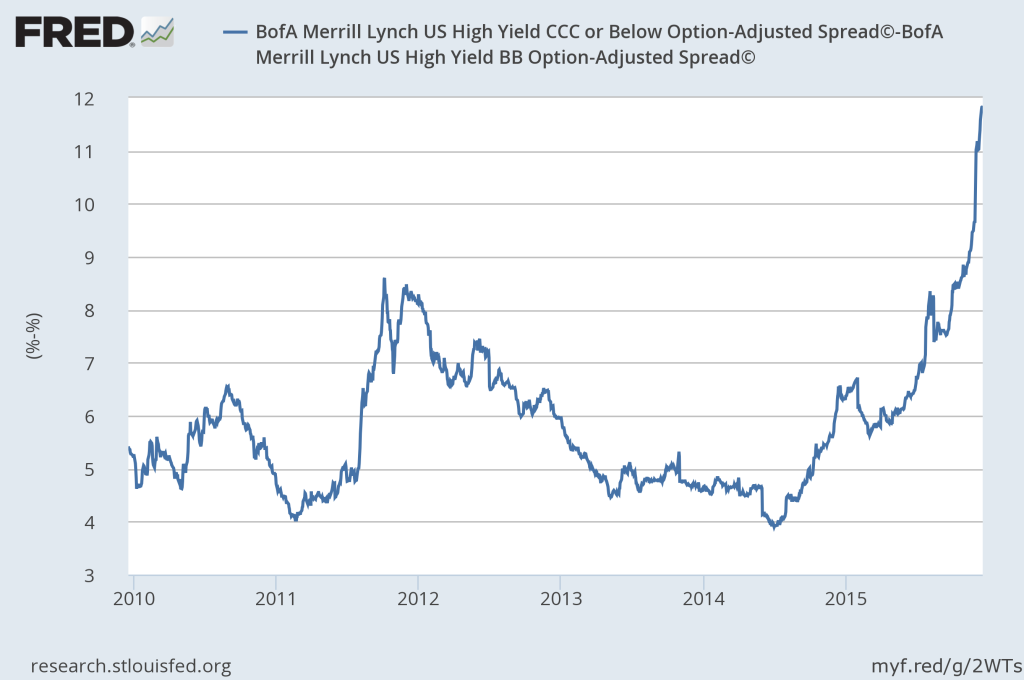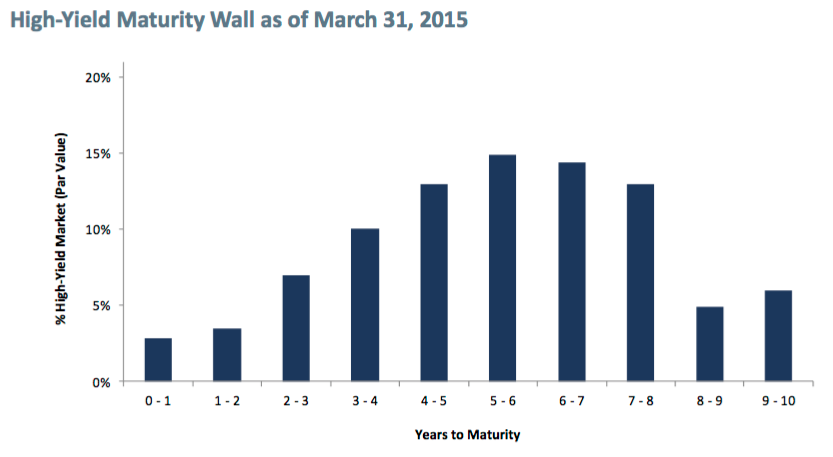There is an ongoing debate about the current state of the junk bond market and what it means for equities and, more broadly, the economy. Spreads on the junkiest of junk bonds have recently moved to their widest levels of this expansion.
The NY Times aptly reflects the consensus view that there has really been no, “rout,” in the market for junk bonds and that they don’t signal anything more serious for other markets or the economy, as they don’t represent a, “systemic risk.” In an article carrying the headline, “the junk bond rout that was’t,” the paper reports:
…in conversations this week with a wide range of investors, Wall Street executives, and economists, no one told me they thought that the Third Avenue fund’s liquidation was likely to set off another crisis. And while bubbles may yet emerge, by their very nature they’re likely to be found somewhere entirely unexpected — not a closely watched, highly liquid market like the $1.3 trillion United States junk bond market.
Bloomberg, though, has an entirely different take, claiming, “The rout in junk bonds is intensifying and there’s blood in the water.” While junk bonds may not represent a systemic risk as credit derivatives did during the financial crisis, they can be one of the more effective leading economic indicators. The Bloomberg article quotes a recently published research paper which posits:
One reason for looking at junk bonds is that the firms that issue junk bonds are closer on the risk continuum to a large mass of firms that are too small and too weak to issue bonds at all, and that rely on banks or the informal capital market for funds. A second reason for looking at junk bonds is that they may be a more sensitive indicator, perhaps a more sensitive leading indicator, of economic conditions than higher-grade bonds.
The paper finds that junk bonds are, in fact, a very good indicator for forecasting economic peaks if not troughs, effectively warning ahead of eight of the last ten peaks in the business cycle. And this just exemplifies how critical the credit cycle is to the economy. Junk bonds are simply the most sensitive segment of the credit market to changing financial conditions. In other words, these bonds react more dramatically to major changes in the credit cycle. Jeff Snider may have recently phrased it best:
"The tide simply recedes first where it stretched inland the farthest." -Alhambra on the blowout in CCC spreads https://t.co/E18Z8ZcPJs
— Jesse Felder (@jessefelder) December 6, 2015
Confirming the message in junk spreads, GMO put out a piece a few months ago suggesting that peaks in the credit cycle have regularly occurred five to six years ahead of peaks in the maturity wall. We are currently at precisely that point in time right now.
I would argue, then, that both the maturity wall and the action in high-yield spreads this year suggest the credit cycle has probably already peaked. Considering just how important credit has become to both the economy and the stock market (in terms of debt-funded buybacks and acquisitions), this is a big deal.
The consensus is that there has been no, “rout,” and any weakness in the market for junk bonds is, “contained.” The evidence, however, suggests junk spreads are an effective leading indicator for both the economy and the stock market. In fact, junk bonds have never performed as poorly as they have in 2015 outside of a recession. To say it means nothing today is to say, “this time is different.”
It may very well be different this time. However, as Bloomberg reports:
In the three months before August 1929, the high-yield spread spiked by 47 basis points, and in the three months before May 1937, it shot up 85 basis points. In the past six weeks of 2015, it has spiked by about 120 basis points.
Nobody is really talking about it but, with the Fed tightening this week amid rising corporate bond spreads, Ray Dalio’s 1937 analog continues to rhyme. And if the next year or two play out anything at all like 1937 investors will once again wish they had paid attention to message in the junk market.

